Maine is a state located in the northeastern United States, known for its rugged coastline and beautiful forests. It is also home to some of the coldest temperatures in the country, with its northern regions experiencing frigid winters and sub-zero temperatures. If you’ve ever been to (or lived in) Maine during the winter, you know just how freezing it can get. The state has quite the reputation for the cold and snow, making it the unsurprising record-holder of some of the country’s coldest temperatures. Today, we are going to learn about these freezing temps and discover the coldest place in Maine! Let’s get started.
The Coldest Place in Maine
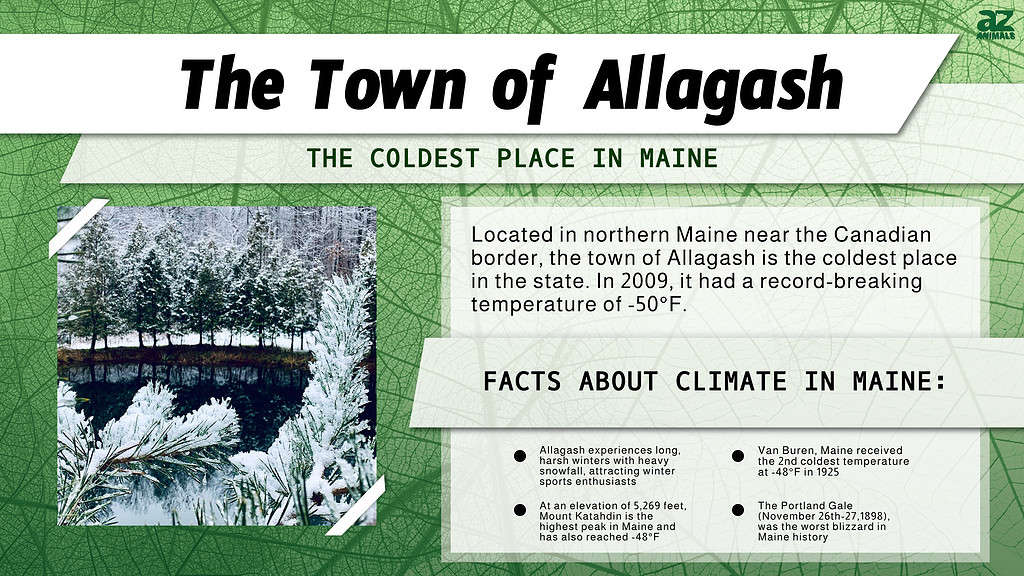
Allagash, a small town located in northern Maine, is known for its frigid temperatures. In 2009, the town set a record for the coldest temperature ever recorded in the state of Maine, with a bone-chilling reading of -50 degrees Fahrenheit.
Located near the Canadian border, Allagash is no stranger to cold weather. The town experiences long, harsh winters with heavy snowfall, making it a popular destination for winter sports enthusiasts. However, the town’s record-breaking temperature in 2009 was particularly brutal, even for the residents of Allagash, who are quite used to the cold. The coldest temperature in Maine’s history was recorded on January 16, 2009, at the Allagash Volunteer Fire Department. The temperature dropped to -50 degrees Fahrenheit, a reading that was pretty stunning for the whole state. The previous record for the coldest temperature in the state was -48 degrees, set in 1925 in Van Buren, Maine.
Incredibly, people in Allagash continued on and managed to continue their daily routines as best as they could. Many people in the town rely on snowmobiles for transportation during the winter months, and these vehicles proved to be invaluable during the cold snap. If you have snowmobiles ready to go for the winter, you are probably pretty used to the cold!
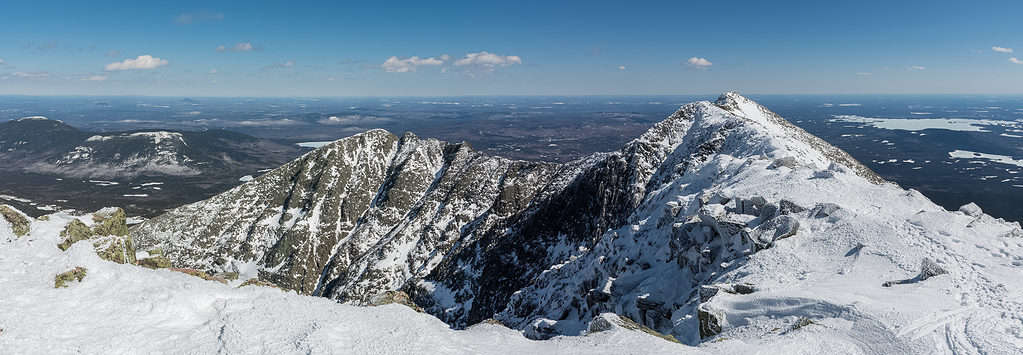
Allagash experiences long, harsh
winters
with heavy snowfall, making it a popular destination for winter sports enthusiasts.
©David Boutin/Shutterstock.com
A Near-Record!
Maine is easily among the coldest states in the eastern U.S., but it isn’t quite the coldest. In fact, the record-breaking -50 degrees Fahrenheit was around 10 degrees warmer than the record of all the states east of the Mississippi. Still, is that even a record that a town wants to hold? Probably not!
Once you cross the Mississippi (and include places like Alaska and North Dakota), the rest of the states don’t stand much of a chance of setting records.
The Coldest Mountain in Maine

The
mountain
is known for its challenging hiking trails and breathtaking views, but it is also one of the coldest places in Maine.
©Zack Frank/Shutterstock.com
Mount Katahdin is the highest peak in the state of Maine, reaching an elevation of 5,269 feet. It is located in Baxter State Park, a wilderness area in the central-northeastern part of the state. The mountain is known for its challenging hiking trails and breathtaking views, but it is also one of the coldest places in Maine. The summit of Mount Katahdin is often blanketed in snow, even during the summer months, and temperatures can drop below zero at night. In fact, the lowest recorded temperature at Mount Katahdin was -48 degrees Fahrenheit, which occurred on January 16, 2009.
Mount Katahdin and the Black River are often considered to be some of the coldest places in all of Maine. Since Mount Katahdin is the highest peak in the state and the Black River is so far north, it makes sense that they have relatively similar temperatures during certain parts of the year.
The Biggest Blizzard in Maine History
The Portland Gale, which lasted from November 26th to 27th of 1898, was the worst blizzard in Maine history. This destructive storm brought hurricane-force winds and blizzard conditions that were felt all along the coast of Maine.
The Portland Gale formed when two weather systems collided off the coast of Virginia, bringing ten-foot high waves to Cohasset harbor and hurricane-force winds to Nantucket. This devastating storm took the lives of over 400 people and destroyed 150 vessels. It will forever be remembered as the greatest blizzard in Maine history.
The storm is especially remembered for its sinking of the steamer Portland off Cape Cod with 192 people on board. This shipwreck became one of the deadliest maritime disasters in United States history at that time. According to a 2002 report by NOAA, sonar imaging identified a large wreck located between Cap Cod and Cape Ann as being that of the Portland steamer. Although it has been over 120 years since this devastating event took place, its impact can still be felt today.
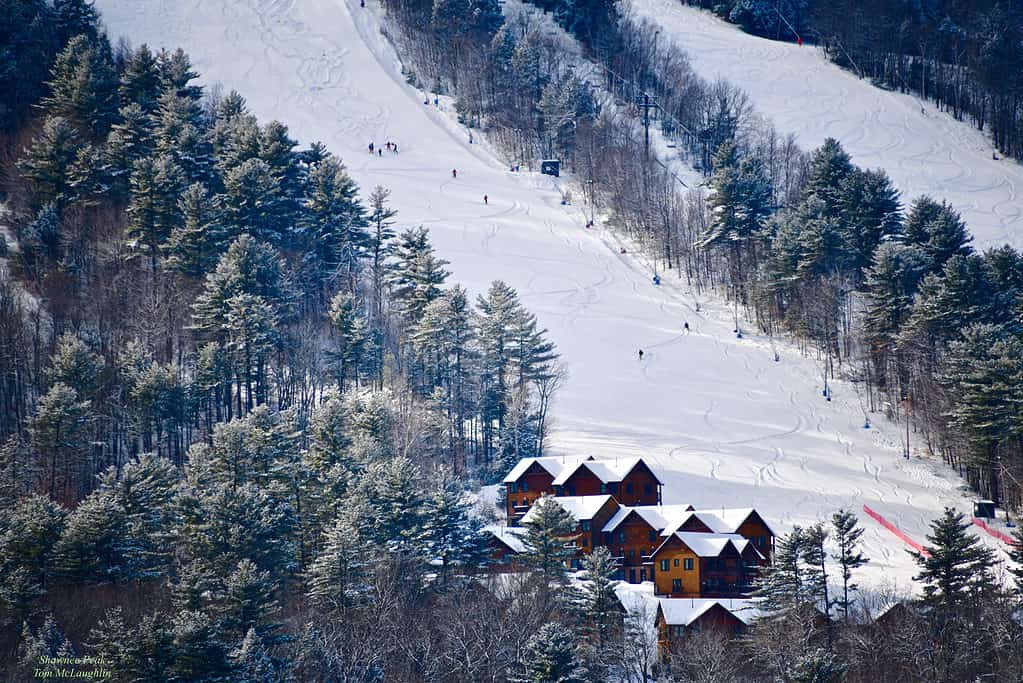
Maine temperatures can reach as low as -50°F in the winter!
©Thomas J. McLaughlin/Shutterstock.com
Adapting to a Life in the Cold
Maine is home to a diverse array of animals, many of which have adapted to the state’s harsh winter conditions. Some of the most well-known animals that live in Maine include moose, white-tailed deer, and black bears.
Moose are Maine’s largest animals and perfectly adapted to the state’s cold, snowy winters. They have thick fur coats that help them stay warm, and their massive strength and height allow them to move easily through deep snow. Moose can also swim, which is useful for crossing the many lakes and rivers in Maine (if they aren’t frozen!).
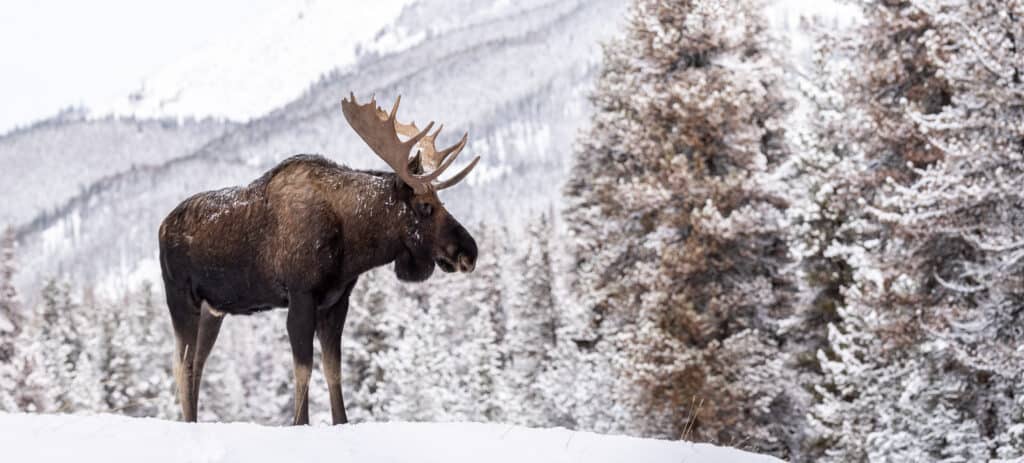
Moose have adapted to winter life in Maine with a thick fur coat and a protective layer of fat.
©Harry Collins Photography/Shutterstock.com
White-tailed deer are also common in Maine and have adapted to the cold weather by growing thicker fur in the winter. They also use the snow to their advantage, using their sharp hooves to dig through the snow to find food.
Black bears are another animal that is well-suited to Maine’s cold climate. They have thick, insulating fur that helps them stay warm, and they are able to hibernate during the winter months to conserve energy.
In addition to these larger mammals, Maine is also home to various birds, including the common loon, the bald eagle, and the snowy owl. These birds have adapted to the cold weather in different ways, such as growing thick feathers or migrating to warmer climates during the winter.
How Much Snow Does Maine Normally Get?
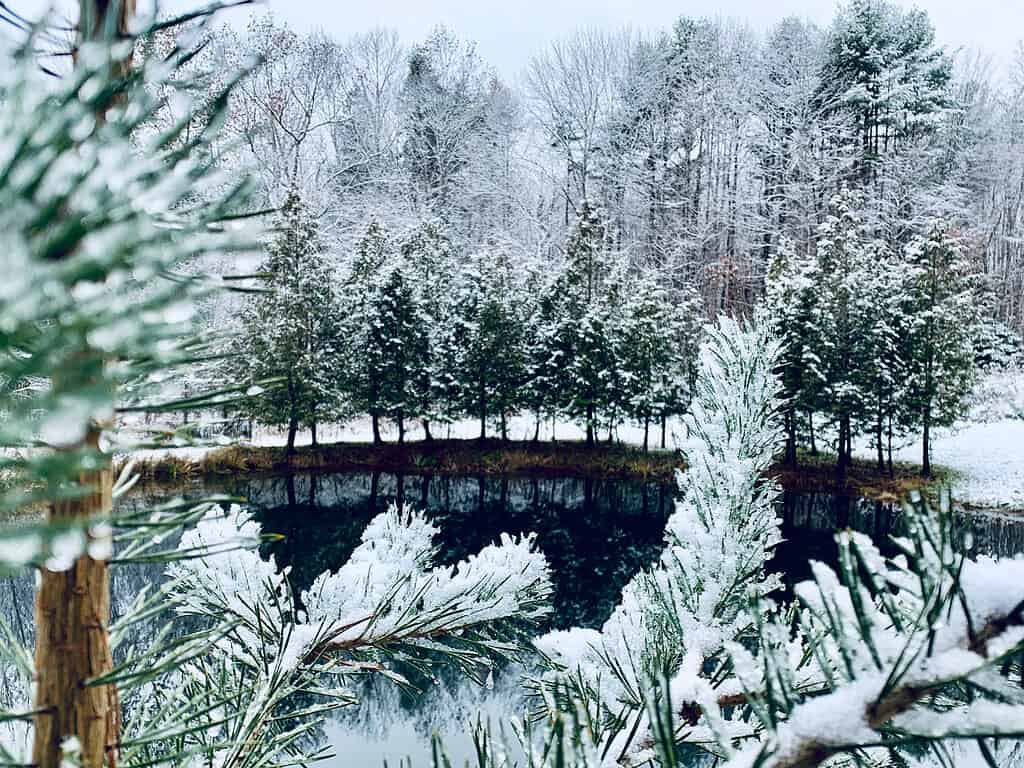
The North Maine Woods is now part of the Maine Public Reserve Lands, managed for both conservation and recreation.
©207PICME/Shutterstock.com
In addition to the cold temperatures, Maine also sees a significant amount of snowfall each year. The state typically receives around 60 inches of snow annually, with some areas seeing even more. This can make traveling difficult, especially in rural areas where roads may not be well-maintained. In fact, the current record for the highest snowfall in the state happened in Orono on December 30, 1962.
In places that get this much snow, it generally just becomes a regular part of life! Northern states like Maine have specialized equipment and processes for when wild conditions hit during the winter. For example, Maine has 400 total snow plows, which is more than Alabama, Georgia, Mississippi, and a few other southern states combined!
Overall, the cold and snow are a part of life in Maine, and residents have learned to adapt and thrive in this harsh environment. While it can be challenging at times, the state’s picturesque winter landscapes and opportunities for outdoor adventure make it a unique and special place to live!
The photo featured at the top of this post is © David Boutin/Shutterstock.com
Thank you for reading! Have some feedback for us? Contact the AZ Animals editorial team.






